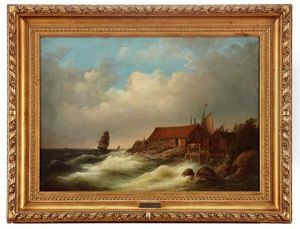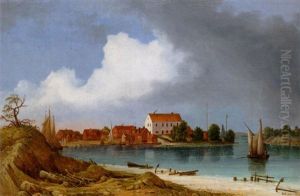Elias Sehlstedt Paintings
Elias Sehlstedt was a Swedish poet and songwriter, born on July 8, 1808, in Stockholm, Sweden. His work is characterized by its humor, warmth, and simplicity, traits that made him one of the most beloved Swedish lyricists of the 19th century. Despite his enduring popularity during his lifetime, Sehlstedt's poetry and songs have not remained as influential in the modern era, yet his contributions to Swedish literature and music during his time are undeniable.
Sehlstedt's early life was marked by his education at Uppsala University, where he initially studied theology, a common path for scholars of his time. However, his passion for literature and poetry soon took precedence over his theological studies. After leaving university, he embarked on a career as a civil servant, which provided him with a stable income but also left him ample time to pursue his writing and poetry.
Throughout his career, Sehlstedt published several volumes of poetry, with his first collection appearing in 1838. His work often explored themes of nature, love, and everyday life, resonating with a wide audience due to its accessible language and relatable content. Sehlstedt's ability to capture the beauty in the mundane and his use of humor and satire made his work particularly appealing. In addition to his poetry, he was also known for his drinking songs, many of which became popular in the taverns and salons of Stockholm.
Despite his success as a poet, Sehlstedt's personal life was marked by tragedy and hardship. He struggled with financial difficulties throughout his life, and his health began to decline in the later years. However, his spirit and love for life were evident in his work until the end. Elias Sehlstedt passed away on November 22, 1874, in Stockholm. Though his name may not be as well-known today, his contributions to Swedish literature and the cultural life of 19th-century Sweden have left a lasting legacy. His work continues to be studied by those interested in the history of Swedish literature and serves as a testament to the enduring power of poetry to capture the human experience.





